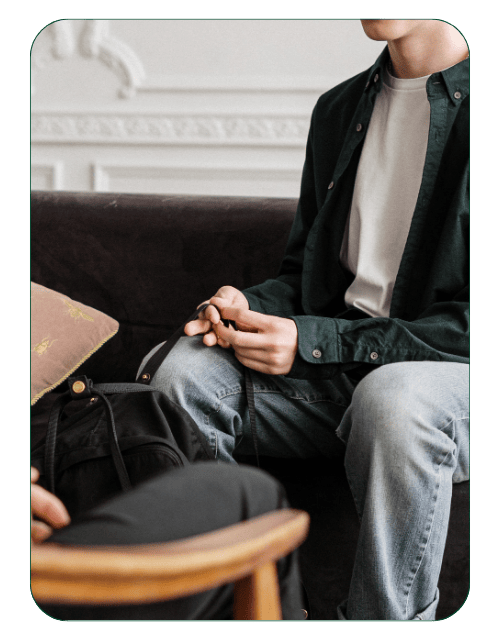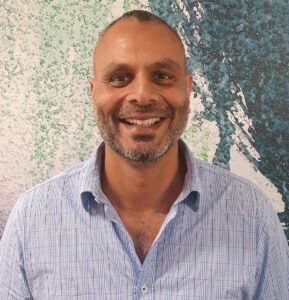Compulsive Behaviours & OCD Counselling Brisbane
It is estimated that between 2-3% of of Australians have been diagnosed with a compulsive behaviour or obsessive compulsive disorder (OCD). And while the term OCD is often used liberally (and often, incorrectly), anyone who has OCD or has a loved one with OCD knows that it is a serious and severe condition that when left unmanaged, can take over your life.
Compulsive behaviours refer to excessive or repetitive behaviours, that are carried out without reward or pleasure. The person feels driven to complete these behaviours to prevent or reduce distress, even if it is just temporarily. Most often, the person will engage in the compulsive behaviour in an attempt to reduce stress or anxiety, or to gain control over a situation.
Generally, the degree of the behaviour or its excessive nature is not connected to the purpose behind the behaviour. In other words, in many cases, the compulsive behaviour cannot logically relieve the stress that causes it.

What Are Compulsive Behaviours?
Compulsive behaviours can look different for different people. Behaviours include shopping, hoarding, gambling, eating, skin picking, hair pulling (trichotillomania), checking, counting, and washing. Most compulsive behaviours are associated with an anxiety or stress.
Compulsions are defined by the following:
- Repetitive behaviours
- Feeling driven to perform these behaviours in a response to an obsession.
- The repetitive behaviours are actioned in an attempt to reduce anxiety or to prevent a dreaded event or situation.
- Regular engagement in these behaviours, despite the fact that they are aversive or troubling.
What is Obsessive Compulsive Disorder?
Obsessive compulsive disorder (OCD) is an anxiety disorder that is characterised by unwanted intrusive thoughts (obsessions) which result in fear and anxiety.
When someone has OCD, obsessive thoughts tend to get stuck and play repeatedly in their mind, generating even more anxiety. The thoughts are intrusive in that they appear whenever and wherever in an unpredictable and uncontrollable fashion. The person feels compelled to carry out certain behaviours which they believe will reduce the anxiety or “undo” the “damage” caused by the thoughts. These are known as compulsive behaviours.
They are compulsive because the person feels that there is no other option but to continue with the behaviour, they are compelled to do so.
Obsessive compulsive disorder is a mental health condition that can begin gradually, and vary throughout life. In severe cases, OCD is one of the most debilitating illnesses worldwide. However, with the right support, psychotherapy, and counselling, OCD can be successfully managed and treated.
The Centre for Human Potential is a psychology clinic in Brisbane, helping clients manage mental health concerns, including OCD. We have a team of psychologists dedicated and experienced in obsessive compulsive disorder. Please get in touch with our team today to learn more about our psychology services.

Diagnosing OCD: When to Seek Treatment
A diagnosis of OCD is made if the person presents with either obsessions or compulsions.
Obsessions are defined by all of the following:
- Recurrent and persistent thoughts, impulses, or images that are experienced as intrusive and inappropriate and cause marked anxiety.
- These thoughts, impulses or images are not just excessive worries about real-life problems.
- The person tries to ignore or suppress the thoughts, or tries to neutralise the thoughts with a particular behaviour or action.
The treatment provided for OCD will depend on how and where it is affecting your life. Different types of therapies will focus on helping to face the obtrusive and obsessive thoughts, without acting on the behaviours.
Our OCD Psychologists

Dr. Atholl Murray

Eleanor Tan

Dr. Eric Wee Chong Tan

Chaminga Dhanapala
Managing & Treating OCD With A Psychologist
OCD is most generally treated with psychotherapy, and Cognitive behaviour therapy is the most commonly used treatment method. This form of therapy helps teach the person a new way of thinking and, therefore, behaving, as well as teaching more adaptive ways of coping with and managing anxiety and stress.
When you are diagnosed with OCD, your local Brisbane psychologist will work you to understand where these compulsive thoughts come from, and how to effectively face and manage these thoughts without acting on the compulsion.
Sometimes medication can be prescribed to assist the person manage the anxiety. In this case, antidepressants and anti-anxiety medications are most commonly prescribed.
CFHP have a team of psychologists and counsellors offering OCD counselling and support from our Brisbane clinics.
The Different Faces of OCD
Obsessive compulsive disorder presents in four major symptom patterns;
Contamination
This is the most common pattern of OCD presenting with a fear of contamination either by touching something dirty, coming into contact with germs, or contaminating others. The resulting behaviour is compulsive checking and washing. In this sense, the person may repeatedly check body, hands and clothes for signs of dirt or contamination. If using gloves for working (in the case of health care workers) the gloves will be repeatedly and excessively checked for holes and damage. Excessive and repetitive washing may also be an associated compulsive behaviour. In such cases, washing may become so extreme that the skin is damaged by literally washing the skin off. Some people struggling with this disorder may find it difficult to leave home and function socially due to their fear of contamination.
Pathological doubt
The second most common pattern is an obsession of doubt implying danger of some kind. Examples include doubt about whether the door has been locked properly, the stove turned off, or the toilet flushed. The obsession results in a fear of negative consequences for example, an intruder through an unlocked door, a fire from the stove, shame and disgust from an unflushed toilet. The person is then compelled to check and re-check whether the door is locked, for example. This pattern is normally associated with guilt feelings and belief that they have forgotten or committed something.
Intrusive thoughts
The third most common pattern includes instrusive obsessional thoughts without any compulsive behaviours. These obsessions are usually repetitious thoughts of a sexual nature, an aggressive act, or a religious nature. These people are often disgusted by and afraid of their own thoughts and may consult with a priest, or report themselves to the police.
Sometimes, although not often, there is a compulsive behaviour associated with the obsessive thought where the person is compelled to “undo” the thought by carrying out an unrelated behaviour such as counting, tapping, or a configuration of behaviours designed to “undo” the obsessive thought.
Symmetry
The last common pattern is the need for symmetry and precision. Here the person is obsessed with needing things perfectly aligned, or a behaviour carried out perfectly. The compulsive behaviour is normally a general slowness, taking them hours to eat a meal, shave their faces or clean their homes. Often the task is started over as precision and perfection were not attained the first time around.
Other symptom patterns
Other patterns that are less common include religious obsessions, compulsive hoarding, trichotillomania and skin picking.
Speak with us
If you or someone you love is suffering from the above symptoms or have a diagnosis of Obsessive Compulsive Disorder, you’re not alone. There is hope out there – OCD has been proven to be successfully managed with the right support. We strongly encourage you to talk to a psychologist to help you build upon a new way of thinking, behaving, and managing anxiety.






